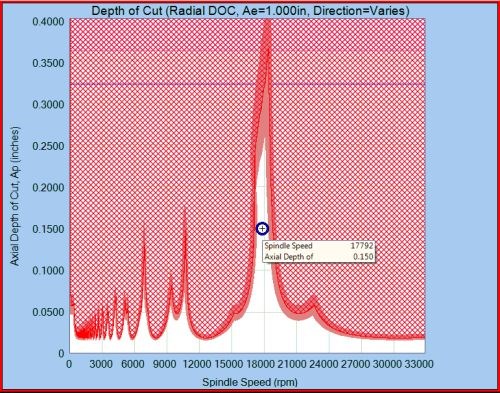What Your Handbook Isn’t Telling You
Tony Schmitz, professor at the University of North Carolina at Charlotte, gives a presentation on machine tool dynamics. Learn the role that this concept plays in realizing your optimal machining center performance.
Share







This example of a stability diagram shows how increased depths of cut that are possible within specific, narrow bands of spindle speed. Sometimes a deeper cut is possible at a higher speed than where the process is currently running.
— The best-performing speeds for a given machining process often do not correspond to machining handbook values.
— Your process might actually deliver better tool life, surface finish and/or metal removal rate if you increase the speed rather than reduce it.
After watching Dr. Schmitz’s presentation, see an example of turning up the speed in this video, and read about how one shop is applying this phenomenon to realize the most efficient performance from its own machine tools.
Related Content
-
High RPM Spindles: 5 Advantages for 5-axis CNC Machines
Explore five crucial ways equipping 5-axis CNC machines with Air Turbine Spindles® can achieve the speeds necessary to overcome manufacturing challenges.
-
6 Machine Shop Essentials to Stay Competitive
If you want to streamline production and be competitive in the industry, you will need far more than a standard three-axis CNC mill or two-axis CNC lathe and a few measuring tools.
-
CNC Machine Shop Honored for Automation, Machine Monitoring
From cobots to machine monitoring, this Top Shop honoree shows that machining technology is about more than the machine tool.












